Never Wear These Shoes on a Plane, Flight Attendant and Pilot Warn
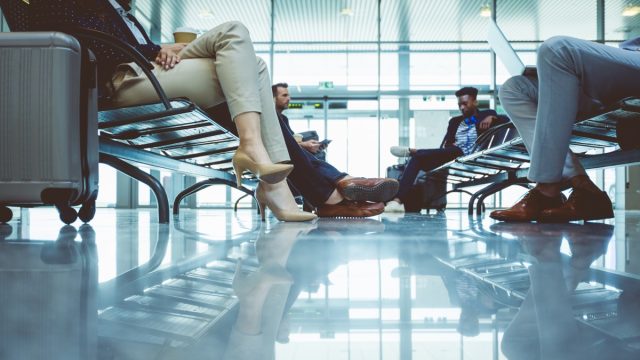
Before 2001, you probably didn’t think much about what footwear to fly in, as long as it was comfortable. But ever since we’ve had to remove our shoes to get through security, that wardrobe decision has become a lot more loaded—you need shoes that don’t have complicated ties or buckles, and that are easy to slip on and off so you don’t hold up the line. But according to experts, there is actually one type of shoe that some people prefer that you should never wear on a plane, as they could pose more than one major risk. Read on to find out which pair of shoes you should store in your luggage instead, according to flight attendants, pilots, and other experts in the industry.
RELATED: Never Wear This One Thing on a Plane, Flight Attendant Warns.
You should never wear high heels on a plane due to emergency risks.
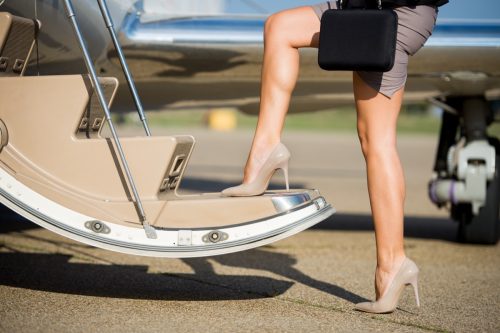
High heels are notoriously uncomfortable, but that’s the least of the problems when it comes to boarding a plane in this fancy footwear. The shoes also pose a potential safety hazard in the case of an emergency situation. “Experts are against the wearing of heels on planes due to how much they compromise the safety of passengers,” explains Michelle Halpern, a travel expert and founding editor of Live Like it’s the Weekend. She notes that heels could puncture the inflatable slides used for emergency evacuations. “High heels are practically death traps in emergency situations since they reduce reaction time and compromise safety equipment such as slides for emergency landings,” Halpern says.
Brett Manders, an international air pilot and author of Behind the Flight Deck Door, points out that in the event of an emergency landing, you may actually be required to take your high heels off because of the risks they pose.
Wearing high heels on a plane may also put your personal health at risk.
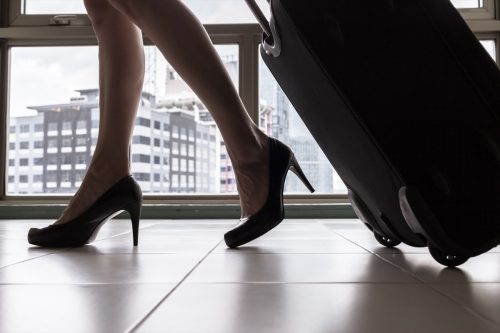
Luckily, the chances of experiencing an emergency landing are minimal, but there’s another reason why wearing high heels is a risky move, and not just because of the obvious potential to trip or fall. Andrea Fischbach, an American Airlines flight attendant, told Who What Wear that when it comes to footwear, she “would really advise against high heels … mostly for safety purposes.”
But she also says to avoid anything tight-fitting, like high heels, to help reduce leg and foot swelling, which is common during air travel due to inactivity and the position of your legs. A blood clot in your leg, otherwise known as deep vein thrombosis (DVT), can form if excessive swelling persists for several hours, according to the Mayo Clinic. “If you are tall, travel a lot, or are on a long flight, this is extremely important because you face the risk of developing DVT,” Fischbach says.
Manders recommends wearing shoes you can kick off easily on medium- to long-haul flights to offset any swelling issues you might experience.
Halpern also warns that high heels may affect your sitting posture on the plane, which can “cause back problems” over time for you.
And for more travel news and tips sent right to your inbox, sign up for our daily newsletter.
Even flight attendants take off their heels on the plane.
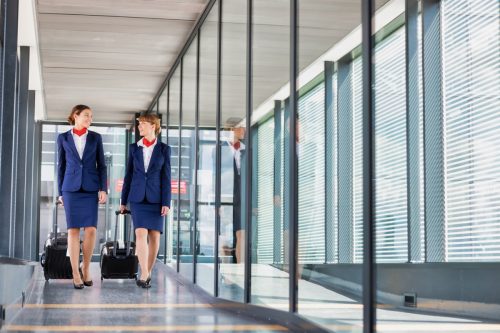
You may be asking yourself, “Well, what about flight attendants?” The truth is, many airlines do require flight attendants to wear high heels everywhere but in the aircraft cabin, according to Everyday Aviation.
During flights, most attendants wear flats because of safety concerns and difficulty maintaining balance when hitting turbulence. “You will often see cabin crew in high heels but once the aircraft is underway, they change footwear into a lower rise heel or flats,” Manders confirms.
Experts also warn against wearing certain open-toed shoes on flights.
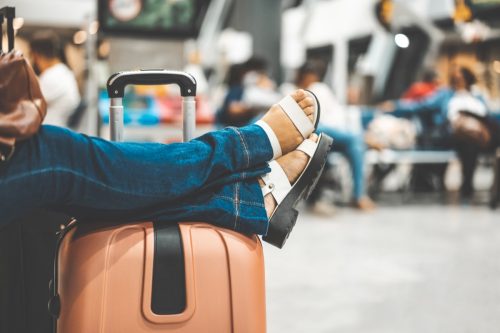
Even if you decide to leave your patent leather peep-toe high heels at home, you might want to avoid other open-toed shoes on a plane as well. Firstly, flight attendant Fischbach says, it’s just kind of gross. “Be wary of wearing sandals if you are planning on going in the lavatory,” she told Who What Wear. “That isn’t water on the floor (yes, use your imagination), and sandals invite whatever that liquid is to splash on your feet.” But this shoe choice could be dangerous as well.
Professional travel expert Shawn Richards, an expedition coordinator at Ultimate Kilimanjaro, says that sandals and flip-flops aren’t recommended because you could become more susceptible to foot wounds from debris in the case of emergency. Plus, if you’re wearing open-toed shoes, they can fly off during emergency situations and either “cause injury to other passengers or hinder a safe exit from a bad situation,” adds Phillip Westfall, a travel expert and director of marketing at RVezy.
RELATED: If You’re Over 65, Never Wear This One Shoe, Experts Warn.